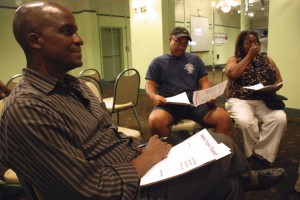In Europe, if all roads lead to Rome, in Queens, they all lead to Jamaica. Home to the Long Island Railroad, more than 200,000 passengers pass through Jamaica Station daily, where they can transfer to one of three subway lines or hop on their choice of 18 buses. Up to 360 buses drive along Archer Ave during peak times, according to the NYC Department of Transportation’s Jamaica Bus Improvement Study. And there’s the JFK AirTran.
But if all roads lead to Jamaica, they don’t seem to lead out. Lack of public transit within both Jamaica itself and the neighboring communities is one of the most common complaints among locals. Inconvenient routes and unreliable schedules make it harder to do just about everything – especially work.
At last month’s Jamaica public transit town hall, a meeting hosted by the non-profit organization Transportation Alternatives, attendees rattled of a list of problems. Last year’s discontinuation of several bus lines is still making transit tough, and the buses that are still there can’t seem to stay on schedule.

Wade McDonald listens to fellow commuters during a breakout session at the Jamaica Public Transit Town Hall. (photo by Jenny Marc)
“Public transportation is supposed to connect the business areas to the residential areas,” explained Michael Murphy, a Transportation Alternatives spokesman. “It’s pretty obvious that employment is more difficult when people can’t get to the jobs that are available.”
Given these tough economic times, people are likely to travel further and longer for the sake of a job. But does there ever come a point when the job is just too far? When getting there is simply too complicated? Take a few seconds to fill out this survey, and help figure out how public transportation is effecting not only unemployment, but employment as well.

